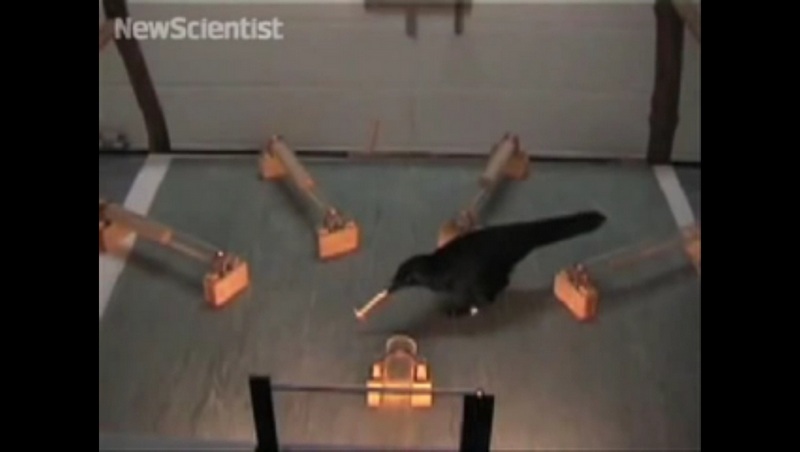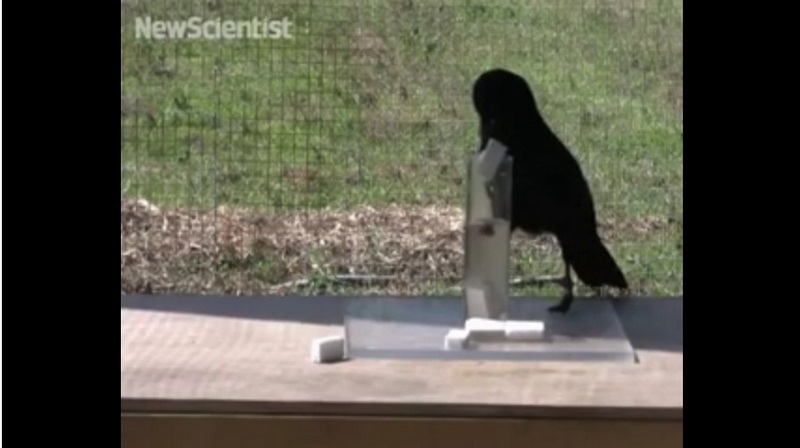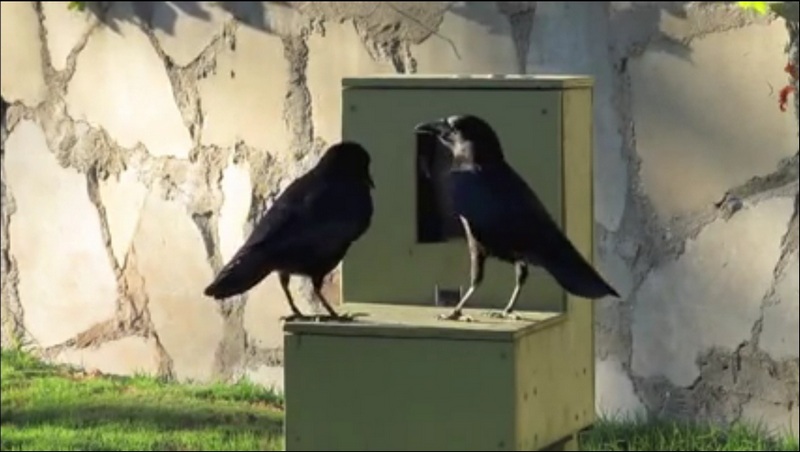4 Instances that Show How Technologically Predisposed Crows Are
Recently, crows were caught on camera creating tools to pick their food. Certainly, videos of crows showing their intelligence especially when it comes to making tools would pique anyone’s interest. This, however, is nothing new and is just one of the many instances that demonstrate the technological predisposition of crows. These birds are considered to among the world’s smartest animals and have been regularly featured in fables possessing enviable smarts. Get to know these birds more and find out why they are being considered to be as intelligent as seven-year-old human children, particularly in their technological predisposition. These birds clearly have a grasp of scientific principles and are able to make use of these principles in their daily lives.
- Understanding of the Archimedes’ Principle
Archimedes’ Principle is a law of physics that states that if the weight of the liquid displaced is less than the weight of the object, the object will sink. This means that the upward buoyant force exerted on an object partially or fully immersed in a liquid is equivalent to the weight of the fluid being displaced by the object. Okay, crows may not really think of it this way but at the very least, they know that they can raise things up on water if they drop stones into the water to bring the water level up.
In an experiment wherein the crows were given food inside a cylinder partly filled with water but with tiny openings so their head could not get through to pick the food up, the crows were able to think of raising the water level inside the cylinders by dropping objects into the cylinder. This may appear ordinary but the crows actually knew what particular object to drop into the cylinder. They picked ones that were not light and porous, those that were dense enough to sink into the bottom of the cylinder and let the water level rise so the food floating on it will also rise and be reachable for them. Moreover, in a setup wherein the cylinders were inconspicuously connected with each other (such that the water levels of the different cylinders affected each other), the crows were able to discern the connection. Since there were no small enough objects available to put into the slimmer cylinder, the crows realized that they can also raise the water level in the slimmer cylinder by putting objects into the bigger cylinders.
- Use of Multiple Tools in Sequence
Another experiment showed crows using several tools in succession to achieve a goal. In the experiment, the crows were given three sticks with varying lengths. The sticks were placed in different tubes with the two only accessible if the crows were able to pick the shorter stick first to be used in picking the longer ones. Interestingly, the crows were able to use the multiple tools in the right sequence. Since the shorter stick could not be used to pick the food, the crows used it to pick the longer stick to be able to pick the other longer stick that is long enough to be used in getting the food.

Image credit: Dr. Jo Wimpenny & Prof. Alex Kacelnik of University of Oxford via NewScientist (video screenshot)
- Fashioning Special Hook Tools
This is one of the more recently reported demonstrations of crows’ enviable smartness. Professors from the University of Exeter and University of St. Andrews were able to video crows actually fashioning complex tools in the wild to pick food. The professors claim that their videos are so far the only video evidences of crows making hooked tools in the wild. Using specially designed spy cameras attached to the crows, the professors were able to document two instances when the crows created hooked sticks to be used in probing and dragging out worms from the cavities of a dead tree. One of crows was caught on camera spending around a minute making its hooked tool out of twigs on the ground.
- Crows Using Vending Machines
Crows don’t only know how to create their own tools. They can also use tools or machines humans build. In this YouTube video, crows are seen using a DIY vending machine. Upon learning that dropping coins into a slot on the machine makes the machine dispense some food, the crows repeatedly did the action and obtained food from the machine. Of course the crows were not expected to find their own coins so coins were readily placed on top of the machine for the crows to use.
One viewer asked the poster of the video if the crows ever tried prying the lid off the machine so they can just get the food without paying. The video poster responded that the crows so far didn’t but a racoon successfully did. This is rather interesting considering that the crows regularly see a human opening the lid up (as shown on the video). Could it be that they find it more convenient using the coins that they feel they no longer need to exert any effort trying to forcibly open the machine? The racoon apparently relied on instinct to try finding a way to open the machine to access the food but the crows, knowing that they can just use the coins, didn’t bother repeatedly pecking on the glass or looking for other ways to open the machine.
Technology is the practical application of science. It is about the use of scientific knowledge or at least some common sense to craft tools, devices, machines, or systems for practical use. It’s clear in the examples above that crows have demonstrated their penchant for technology. They don’t just rely on their animal instincts or on evolution to develop specialized body parts. They analyze, plan, and use tools to achieve their goals. It’s exciting to see more of what crows can do as they interact with humans and human technology.


